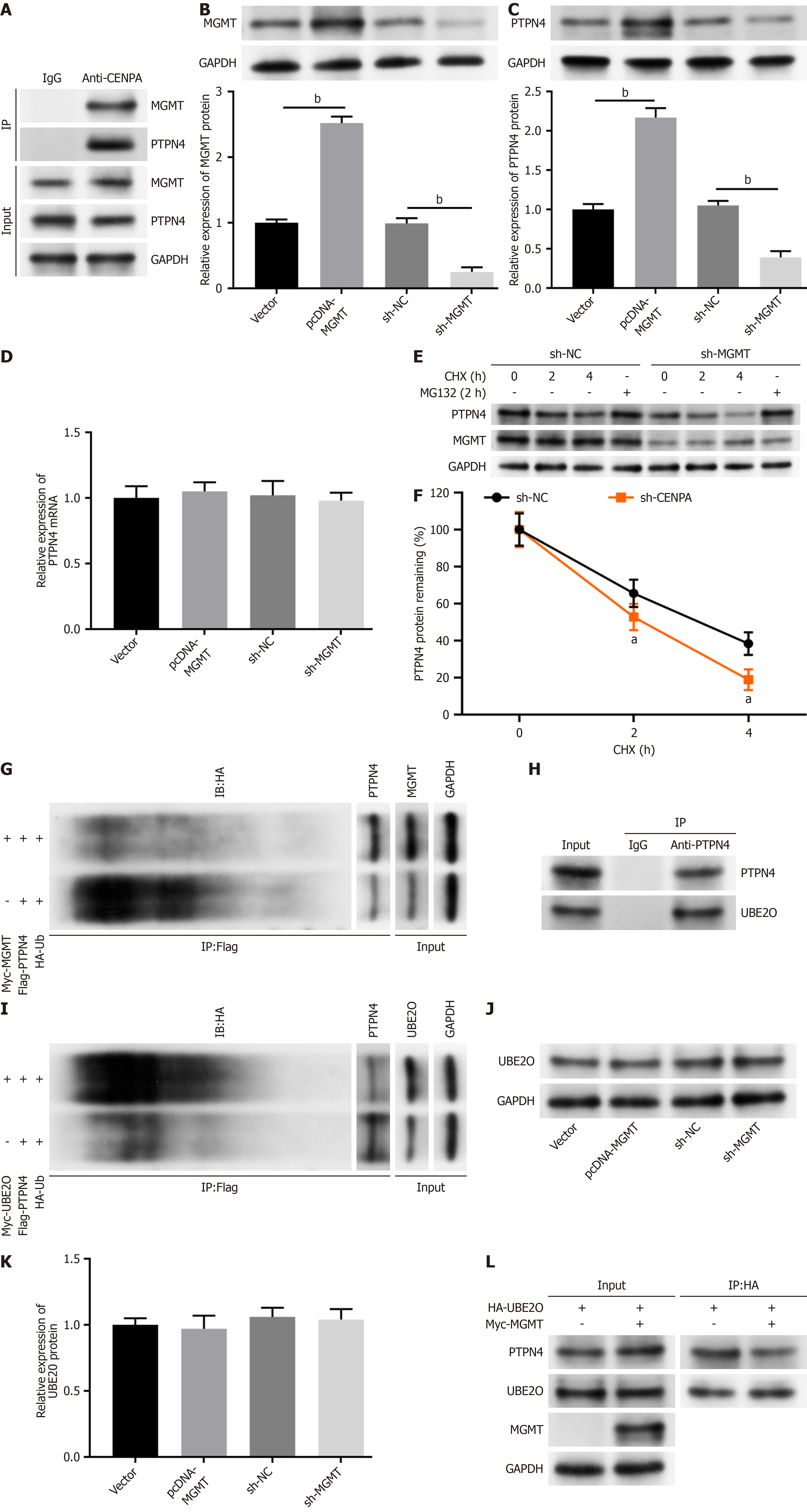Copyright
©The Author(s) 2025.
World J Gastrointest Oncol. Apr 15, 2025; 17(4): 102619
Published online Apr 15, 2025. doi: 10.4251/wjgo.v17.i4.102619
Published online Apr 15, 2025. doi: 10.4251/wjgo.v17.i4.102619
Figure 5 O6-methylguanine DNA methyltransferase interacted with protein tyrosine phosphatase nonreceptor type 4 and increased phosphatase nonreceptor type 4 protein stability.
A: Co-immunoprecipitation assay showing the interaction of O6-methylguanine DNA methyltransferase with phosphatase nonreceptor type 4 (PTPN4); B and C: Western blot assay was used to examine methyltransferase (MGMT) and PTPN4 protein levels; D: PTPN4 mRNA expression was assessed with quantitative reverse transcription PCR; E and F: PTPN4 protein stability was evaluated after treatment with cycloheximide and MG132 for indicated times; G: PTPN4 protein ubiquitination were detected after MGMT overexpression; H: Co-immunoprecipitation assay showing the interaction of ubiquitin-conjugating enzyme E2O (UBE2O) with PTPN4; I: PTPN4 protein ubiquitination were detected after UBE2O overexpression; J and K: Western blot assay was used to measure UBE2O protein levels after MGMT overexpression and knockdown; L: MGMT reduced the interaction between UBE2O and PTPN4. Data are presented as mean ± SE. aP < 0.05; bP < 0.01; CENPA: Centromere protein A; GAPDH: Glyceraldehyde-3-phosphate dehydrogenase; MGMT: O6-methylguanine DNA methyltransferase; PTPN4: Protein tyrosine phosphatase nonreceptor type 4; sh-CENPA: Short hairpin RNAs targeting Centromere protein A; sh-MGMT: Short hairpin RNAs targeting O6-methylguanine DNA methyltransferase; sh-PTPN4: Short hairpin RNAs targeting protein tyrosine phosphatase nonreceptor type 4; UBE2O: Ubiquitin-conjugating enzyme E2O.
- Citation: Xin MJ, Yuan Y. Centromere protein A knockdown inhibits rectal cancer through O6-methylguanine DNA methyltransferase/protein tyrosine phosphatase nonreceptor type 4 axis. World J Gastrointest Oncol 2025; 17(4): 102619
- URL: https://www.wjgnet.com/1948-5204/full/v17/i4/102619.htm
- DOI: https://dx.doi.org/10.4251/wjgo.v17.i4.102619









